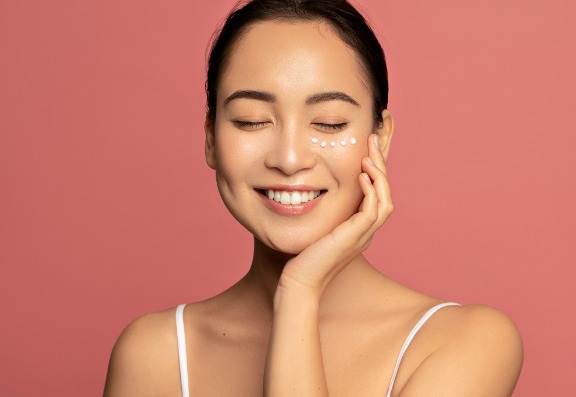One of the areas disliked most by visitors to Aurora Clinics is the area under their eyes: dark circles here can appear even more ageing than wrinkles or grey hair. One of the common misconceptions is that under-eye dark circles, bags and puffiness are the same thing.
In fact, they vary in looks and are generally caused by different factors. Under-eye bags are due to an excess of skin when the delicate under-eye area loses elasticity as a natural side-effect of ageing. Hereditary conditions can worsen this i.e. if your parents had particularly pronounced under-eye bags.
Although certain creams and serums can help tighten this area, unfortunately, little can be done long-term to drastically improve under-eye bags except resorting to blepharoplasty surgery. Under-eye puffiness is typically linked to fluid retention (often hormonal or connected to the weather and stress, but equally diet and allergies may play a part). Puffy under-eyes, therefore, respond best by addressing the cause of the swelling and either relieving it with natural remedies or fixing it with the necessary changes to lifestyle.
They are tricky to disguise with make-up (which often just accentuates the area) and are really just masking the problem. The rest of this article focuses on the most common complaint we hear of; the dreaded “dark circles”.

Creams:
People are generally sceptical about under-eye creams (us included!) There are lots of gimmicky products out there that simply not living up to their claims. This is largely due to the issue of identifying the cause of your dark circles: creams tend to treat shadows caused by tiredness and dehydration, not pigmentation, ageing or genetics.
The only long-term treatment cream we endorse for this area is Cernor XO. This cream does work to lighten pigmentation under the eyes and also tightens the area and reflects light. You need to be particularly careful about the strength and fragrance of products that you are putting under your eyes because the skin there is so thin and delicate: Cernor are careful to point out that the cream should be tested for sensitivity.
Non-Surgical:
If your under-eye circles are caused by a deep tear trough, then it may be possible to treat this with a Non-Surgical treatment like Juvederm Hydrate dermal fillers. You can try to assess whether your dark shadows are due to deep tear troughs by applying pressure to the area.
If it is due to a deep tear trough, under pressure it will form over at the inside corner of the eye (where a tear would flow). Dermal Fillers can also successfully treat shadows caused by under-eye hollows due to fat loss in the area after weight loss, or as a natural side-effect of ageing. Juvederm Hydrate to this area can give instant and dramatic results (after possible initial bruising) but you will need a thorough consultation first to establish whether this is a suitable treatment for you.
If your dark circles are due to Hyperpigmentation, (dark, uneven skin patches) then you may possibly respond well to a series of Chemical Peels again, a consultation with an experienced Aesthetic Practitioner is vital to determine whether this is the right course of action for you.
Baby Botox, also known as micro-Botox, is a cosmetic procedure that has gained popularity in recent years.
I would be approaching 50 soon. I am finding myself increasingly concerned how do I maintain my skin and prepare myself for when I am older...
Smoker lines are those pesky wrinkles etched around the lips and are a common concern. So what can be done about them?
Hey, wait!
Before you go.....
Let's stay in touch, pop your details here and we'll send our editor's hand-picked updates on your fave subjects.